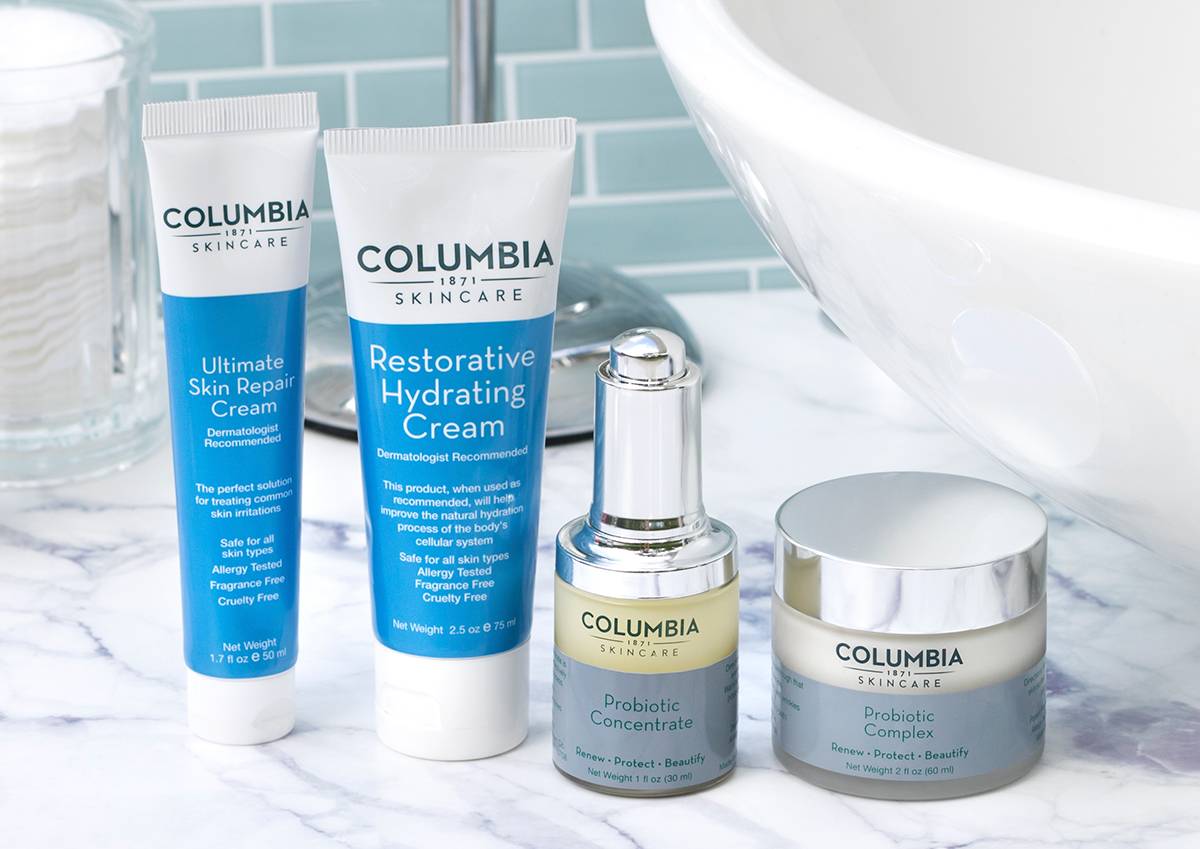
Seeing Skincare Differently
Our skin, the largest organ of our body, is much more than what we see on the surface. It’s a complex and crucial barrier that

For All Skin Types

Our skin, the largest organ of our body, is much more than what we see on the surface. It’s a complex and crucial barrier that protects us from the outside world, regulates temperature, and even helps produce vitamin D. Today there is a greater understanding of the skin microbiome, without which the skin would not function properly. Along with this newly acquired knowledge, comes the opportunity to vastly improve the methods of healthy skin maintenance. Of course, it is not quite as easy to rapidly incorporate new technology into all skincare products. There are learning curves which each brand must experience when attempting to utilize this new paradigm for product development.
This amazing organ is made up of three main layers, each with its own specific functions:
Epidermis: The outermost layer, the epidermis is like a shield, constantly renewing itself to protect us from harmful substances, germs, and even UV radiation. It’s also waterproof, helping to keep moisture in and prevent dehydration. The epidermis is further composed of several sublayers, each playing a specific role:
• Stratum corneum: The topmost layer, made up of dead skin cells packed together with keratin, a protein that gives skin its strength and waterproof quality.
• Stratum granulosum: Here, dead skin cells begin to form and lose their nuclei.
• Stratum spinosum: Live skin cells actively divide and multiply here.
• Stratum basale: The deepest layer, where new skin cells are produced.
Dermis: The middle layer, the dermis is the strong, elastic part of our skin. It provides structure and support, and contains connective tissue, hair follicles, sweat glands, sebaceous glands, blood vessels, and nerve endings. Here’s a breakdown of some of its key components:
• Connective tissue: This network of fibers, including collagen and elastin, gives skin its strength and elasticity.
• Hair follicles: These house the roots of our hair and are responsible for hair growth.
• Sweat glands: These produce sweat to help regulate body temperature.
• Sebaceous glands: These glands produce sebum, an oily substance that helps keep our skin hydrated and lubricated.
• Blood vessels & nerve endings: These deliver oxygen and nutrients to the skin, carry away waste and allow us to feel sensations like touch, pain, and temperature.products.
Hypodermis (Subcutaneous tissue): The deepest layer, the hypodermis is made up of loose connective tissue and fat cells. It acts as an insulator, helping to regulate body temperature and store energy. It also provides cushioning and padding to protect our bones and underlying tissues.
• Hypodermis: Provides cushioning to protect underlying bones and tissues.
• Hypodermis: Composed of loose connective tissue and fat cells.
• Blood vessels: These deliver oxygen and nutrients to the skin and carry away waste products.
• Hypodermis: Focuses on insulation and energy storage. The fat cells within the hypodermis act as insulators, helping regulate body temperature and and serve as reserves for energy.
These three layers work together seamlessly to form a protective barrier that regulates temperature and safeguards our body. By understanding the structure and function of each layer, we can appreciate the amazing complexity of our skin and take better care of it.
Traditionally, the approach has been to treat diseases of the skin using topical applications with varying degrees of success. Historically the methodology seemed to be; if at first you don’t succeed, try, try, again. This could explain why so many products have been recycled by brands as “new and improved.”
At Columbia SkinCare, where we have been studying the human microbiome for decades, we utilize a topical dermal drug delivery technology which gives our products the ability to provide targeted treatments for specific skin conditions. In addition, many of our products are formulated using proprietary fermented lysates which strengthen the commensal bacteria found on the skin microbiome. This results in enhancing skin symbiosis, and allows for maximum skin functionality.
Our products are designed to help build healthy skin from the bottom up; from the dermis to the epidermis, by nurturing it with the nutrients it needs to stimulate natural regeneration. We invite you to join us in the conversation.

Our skin, the largest organ of our body, is much more than what we see on the surface. It’s a complex and crucial barrier that

In the world of skincare, countless products vie for our attention, promising a youthful glow, wrinkle reduction, and age defying perfection. But with so many

In the realm of skincare shopping, there’s a little-known secret that can make a big difference both to your wallet and the planet: opting for

The “wellness” industry is booming. From colon cleanses to crystal healing, the market explodes with promises of optimal health, inner peace, and eternal youth. But

At Columbia SkinCare, when we ponder the question, “Are you feeling well?”, we delve deep into the essence of what wellness truly signifies. In our